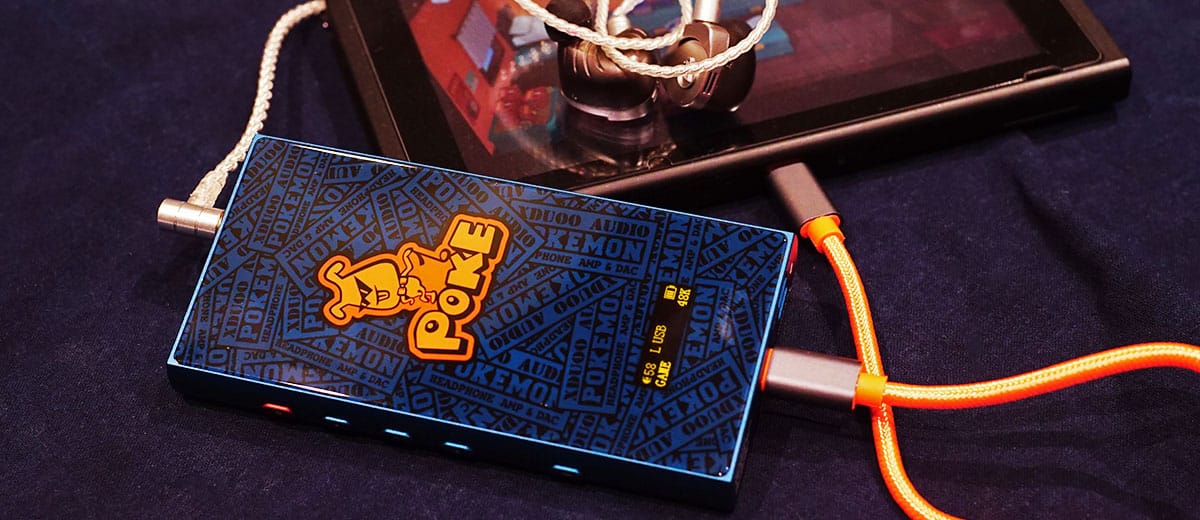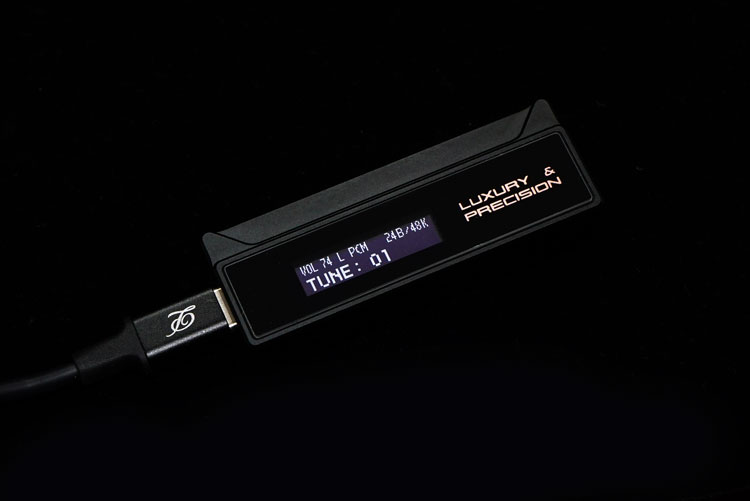Synergy
Efficiency
With various IEMs tested the xDuoo Poke II is very quiet in the background, especially when using a USB connection. From official data, xDuoo is using a regulated power supply that enables excellent control and does not affect the dynamic range and openness.
On higher gain, you will sense more noise from the background and the track but it is way from being intolerable. There is some nearly inaudible hissing when using the Bluetooth connection but not detectable listening outdoor unless you push up the gain and use very sensitive earphones.
Power
The Poke II is able to handle most IEMs at ease with its 700mAh output when using the balanced connection. With other 3.5mm terminated gears there is still sufficient energy but the balanced connection clearly has an edge over single-ended output in this case.
The output power on the Poke II can handle high impedance IEMs and earbuds pretty well. IEMs such as the Earsonics STARK sound quite powerful and clean with decent punching power and air. The current demanding planar Dethonray Tender 1 is driven pretty well on the Poke II as well to sound clean and controlled.
Pairings
The Poke II is able to power most IEMs and small cans. The rather clean and neutral tuning with a gentle roll-off allows it to pair with different gears easily.
Fast, resolving BA-based designs or hybrids adds more resolution to the output and complements Poke II’s slightly soft tuning, while dynamic IEMs that have a thicker low-end weight up the vocal range to sound relaxing and fuller.
The onboard equalizer is effective in giving the output a fine nudge in coloration, and with the IEMs I test I am getting decent dynamic range and resolution, with the treble clearly defined and free from harshness.
Select Comparisons
FiiO Q5s Type-C
$399.99
Technical
The FiiO Q5S Type-C from FiiO features an interchangeable modular design with the THX-certified AM3D module pre-installed. The amplifier features 10-band EQ and switchable digital filters and also allows users to tweak settings via FiiO’s control app.
The decoding part uses dual AK4493EQ supporting up to DSD 512 via a USB connection. Similar to the Poke II, the USB solution is based on XMOS, while 3.5mm and 4.4mm outputs are supported similarly.
The max output on the FiiO Q5s reaches 560mW @32Ω load and the SNR measures >117dB with <0.002% THD+N performance.
Design
The Q5s is CNC machined and partially brushed, which makes it looks very smooth, solid, and modern. The back of the Q5s is adorned by faux leather and compared to the playfully designed Poke II the Q5s is the more professional yet much the geekier design.
Practically, the screen on Poke II makes it easier to identify what settings are on, while the Q5s allow optical and coaxial input that some users may find useful. The physical volume knob on the FiiO also allows more intuitive control, though not as precise as the stepped volume on the Poke II.
Performance
Comparing the output power, the xDuoo Poke II is ahead in raw power with its 700mW output @32ohm load. There is more energy in fullness in the bass on the Poke II, but perhaps that is because the Q5s sounds more confined and refined.
While both amplifiers are not heavily colored, the Q5s emphasizes transients and control more, and it is not as energetic and dynamic compared to the Poke II.
Testing with classical tracks using the Earsonics ONYX and Dethonray Tender 1, the Poke II sounds more expansive and airier than on the Q5s. The Q5s sounds flatter and applies a sharper roll-off on the highs, which results in better control but not as fun and dynamics.
In short, the technical performance on the Q5s is a tad bit ahead but it doesn’t sound as engaging nor as powerful as the Poke II, especially with older, lossy tunes in the library.
Luxury & Precision W2
$299
Technical
The Luxury & Precision W2 is one of the best dongles in the market with FPGA chipset-powered equalizing technologies and dual Cirrus Logic CS43198 decoding chipsets that is similar to the Poke II we are reviewing this time.
The S/N ratio for this dongle goes as high as 131dB and its output power goes up to 230mW @32Ω. The power output on the Poke II is nearly 3.5 times of the W2 which doesn’t have a strong amplifying architecture but gives it a high S/N performance.
Design
The L&P W2 and xDuoo Poke II are two tiers of products that are normally not compared directly. By sacrificing some mobility, the Poke II packs in a battery so that instead of draining your phone it could even give it a quick charge.
At the same time, there are a lot more buttons and functions which allows the Poke II earphone pairing to be a lot easier.
Performance
When testing with very sensitive IEMs such as the HUM Dolores, especially on 3.5mm output, the difference between the xDuoo Poke II and L&P W2 is mainly on the tonality. Where the W2 is more focused in the mid-range frequencies and sounds sweeter, and more refined in the treble.
Both devices sound smooth and engaging. The Poke II stresses more on the extreme ends to boost clarity while pressing down the lower mids more than on the W2 to sound even smoother and cleaner in the mid-range.
Such tuning favors dynamic IEMs which need the power in the kicks as well as a small push in the upper mids to the treble range for that extra crispiness.
The difference in performance and power is much more apparent when using more current demanding earphones such as the Dethonray Tender 1 or testing with headphones.
While the W2 is a true performer with sensitive earphones when the load gets more demanding its extension will be limited, and the bass is much more polite due to power constraints.
With Poke II’s output that is nearly 3x of the W2, the bass swing is much stronger and firmer on headphones also DDs with larger driver sizes, allowing it to boost dynamics and the output loudness much stronger.
Our Verdict
XDuoo has made an interesting move to bring to the masses a welcoming and capable product. It has lots of functions suitable for those who want to move from dongles to feed their IEMs, earbuds, and cans with more power or stream over advanced Bluetooth codecs.
The Poke II has a clean, uncolored tuning with a lot of power for the size. It is an easy match with various IEMs, forgiving with lossy old files, and is able to bring up dynamics for streaming content to make the listening experience much more enjoyable on the go.
The Poke II is a fun attempt alluring to new hobby entrants who want more power and features, or for gamers who want to boost the sound experience on their hand-held systems.
xDuoo Poke II Technical Specifications
- Decoding chipsets: Dual CS43198
- PCM decoding: up to 32-Bit/384kHz
- DSD decoding: Up to DSD256 (native/DoP)
- MQA support: 8x MQA rendering
- Bluetooth version: 5.0
- Bluetooth Codecs: SBC, AAC, aptX, APTX LL, APTX HD, LDAC
- Bass boost: ±10dB
- Treble boost: ±10dB
- Gain: 0/6dB
- Frequency response range: 20Hz-20kHz
- Battery Capacity: 4000mAh
- Playback time: USB ≥8H, Bluetooth ≥12H
- Dimensions: 120*60*15mm
- Output parameters on 3.5mm: up to 340mW @ 32Ω
- THD+N: 0.0015%@1kHz
- SNR: 113dB
- Cross talk: ≥77dB
- Output parameters on 4.4mm:
- Output power: up to 700mW @ 32Ω
- THD+N: 0.0019%@1kHz
- SNR: 119dB
- Cross talk: ≥106dB





